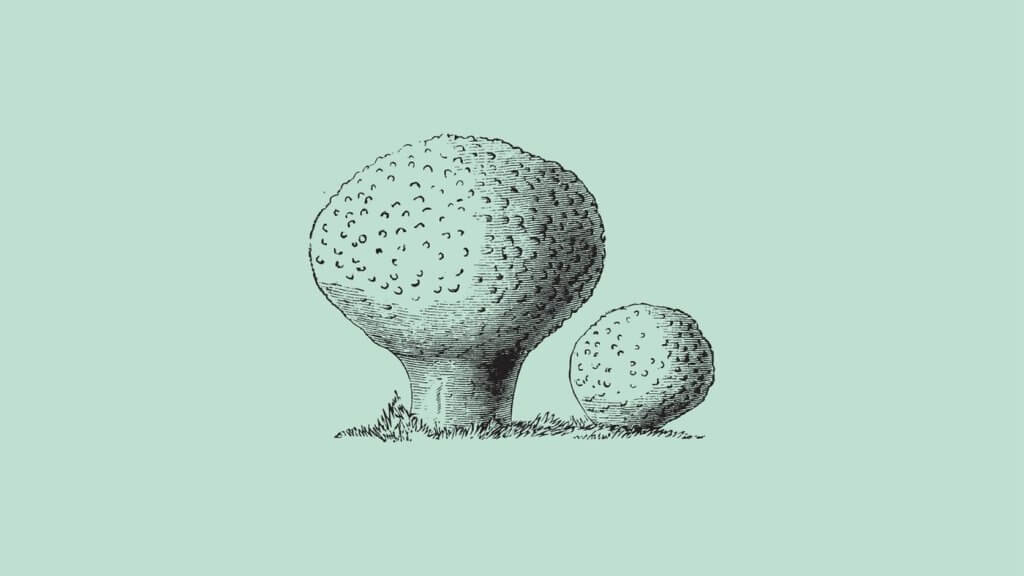The common puffball or Lycoperdon Perlatum is an edible mushroom. It is covered in spines and warts and is connected to a rhizomorphic base. It thrives in many different climates and is often found growing in groups. Young Lycoperdon perlatum is edible, but mature fungi are not.
Lycoperdon Perlatum: Aliases and Fungus Profile
From the Fungi kingdom, Basidiomycota division, Agaricomycetes class, Agaricales order, Agaricaceae family (formerly known as the Lycoperdaceae family), and Lycoperdon genus, the Lycoperdon perlatum is known as the common puffball.
If we break down the scientific name, we are left a bit bewildered. Lyco, meaning wolf, and Perd, meaning to break wind, aka fart. Considering the mushroom is fairly odorless, this name is a mystery.
Other synonyms that are used to refer to this fungus include:
What Are You Foraging For Right Now?
We're thrilled to hear your ideas. What would you like to submit today? Feel free to share your thoughts and experiences with us.
- Wolf fart
- Warted puffball
- Gem-studded puffball
- Jeweled puffball
- Devil’s snuff box
- Lycoperdon perlatum pers
- Lycoperdon gemmatum batsch
Additionally, some indigenous people believed it caused blindness in the past and referred to it as “no eyes“ or “blind man’s bellows.”
Is Lycoperdon Perlatum Edible?
The common puffball is an edible mushroom. However, once they are mature, they are unsuitable for eating. One of the most obvious ways to know if the fungus is overly-mature is that a small hole opens at the top of the fruit body.
If the mushroom hasn’t been compressed (causing the hole to open), you can also tell by cutting open the stem of the mushroom vertically.
The gleba (internal contents) should be pure white and firm. If the color is yellow-brown, or if the inside has a powdery texture, you should not eat it. It will very likely cause gastrointestinal issues and distress.
How Do You Cook Lycoperdon Perlatum?
Aside from a few initial steps, you can cook these mushrooms similarly to other mushrooms. They have an earthy, nutty flavor and soak up marinades and sauces easily.
Cooking tips:
- Before cooking with the common puffball, you need to wash it thoroughly.
- Cut about one centimeter from the bottom of the stem to check for bugs or bug damage.
- Cut the fungus lengthwise and check for gills (this fungus should have none) or discoloration. Some people also prefer to remove the outer skin of the mushroom. In some cases, it can be a bit tough.
- Cut the mushroom smaller, if desired, and saute it, fry it, dry it out, or use it in soups and salads.
As I mentioned, cooking these mushrooms immediately after foraging is best. Raw or cooked, they do not last more than one or two days in the fridge.
If you need to, you can cook them and then freeze them to use later.
Here are a few simple recipes to try out:
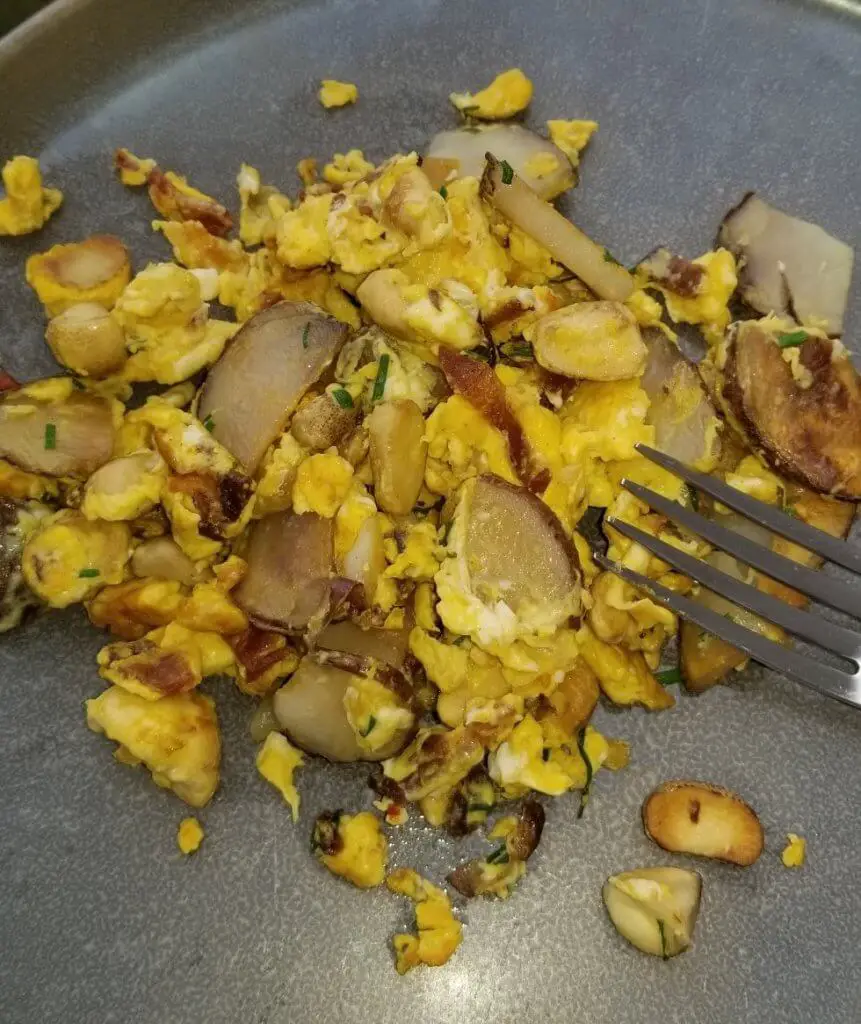
How to Spot a Common Puffball Mushroom
The first thing you’ll probably notice is the flat, outer surface. It is cream-colored and covered in firm, cone-shaped spines with a wide base and accompanied by granular warts of different sizes.
Eventually, these spines turn an ocher color and fall off on their own, but you can also rub them off. Once they have fallen off or been removed, there will be small visible scars on an olive-brown surface.

There is a small, dark-colored apex in the middle of the top of the mushroom, where the spores are released. The spores are released when the mushroom is compressed, even slightly.
This compression can be caused by any irritation, including raindrops, animals, humans, or wind. One puff can release up to one million spores.
When looking at the entire mushroom, you’ll notice it has an inverted pear shape. It is usually between three and eight centimeters tall and two to six centimeters wide. The base is attached to a small root system but is actually thin, white rhizomorphs.
It is also important to note that this fungus has no gills, no pores, and no proper, pronounced cap. To the touch, it more or less feels like a marshmallow and has very thin outer skin.
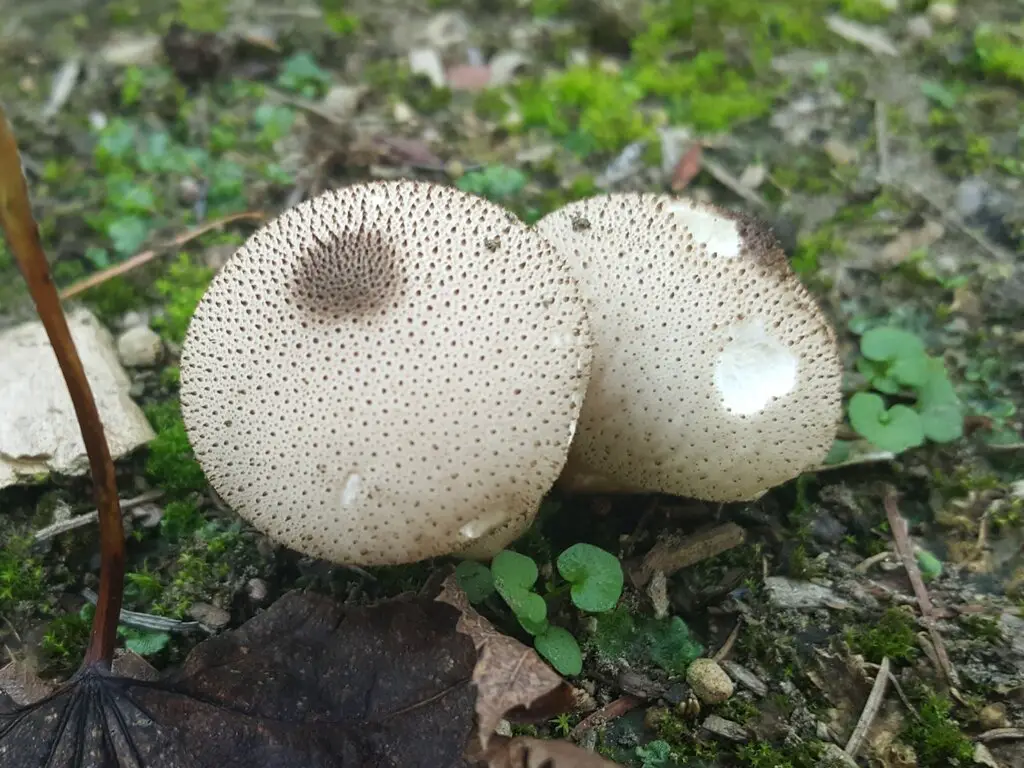
Are There Any Poisonous Look-alikes?
To the untrained eye, there are a couple of poisonous look-alikes.
The two most popular are:
1. Earth balls
The most common being Scleroderma citrinum. These are also referred to as pigskin.
This fungi will cause gastrointestinal issues and vomiting but isn’t likely to kill you.
As you may have guessed from the nickname, the skin of this mushroom is very rough. The earth ball only has a white interior for a short period of time, which is when these fungi are most likely to be confused.
As it matures, the interior of the earth ball becomes purple or black inside and has a two-millimeter thick rind. The common puffball’s rind is as thin as an egg shell.
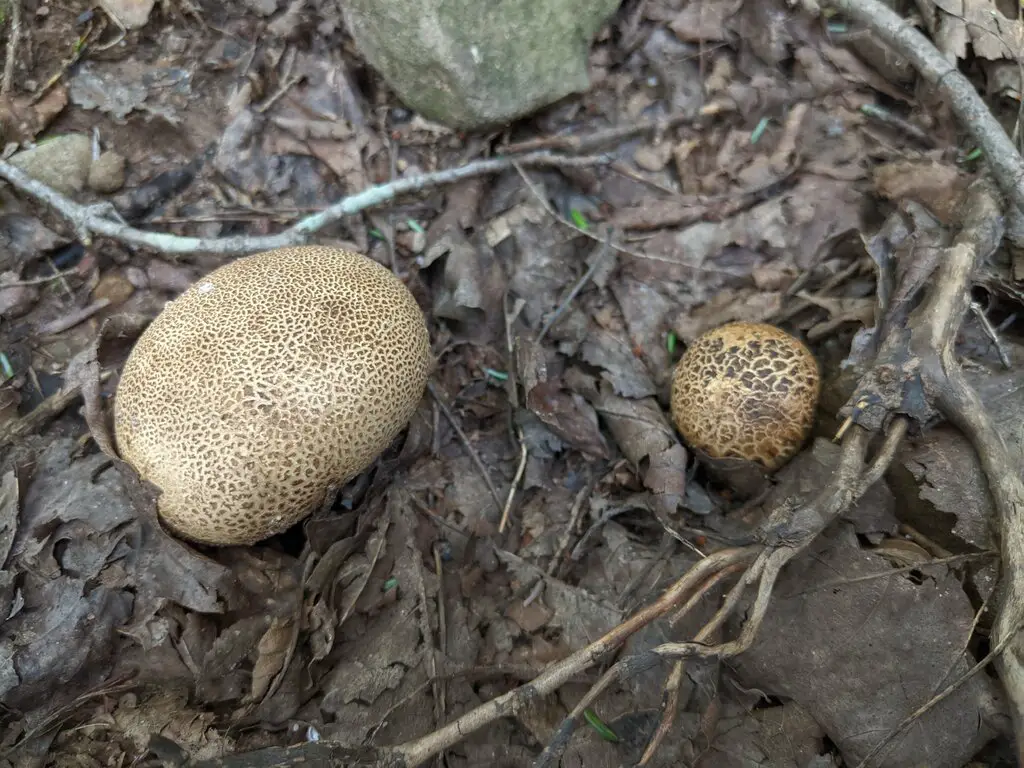
Death Caps (or Amanita phalloides)
Luckily, the death cap mushroom can be touched without an issue. It is only poisonous when ingested.
When these young mushrooms are enclosed in their veil, they look similar to an egg, which, to some, can look like a young common puffball. If you are unsure, open the mushroom. If it is a death cap you will see a stem and gills inside.
Additionally, the veil of the death cap is likely to tear when handled, while a puffball is more likely to break.
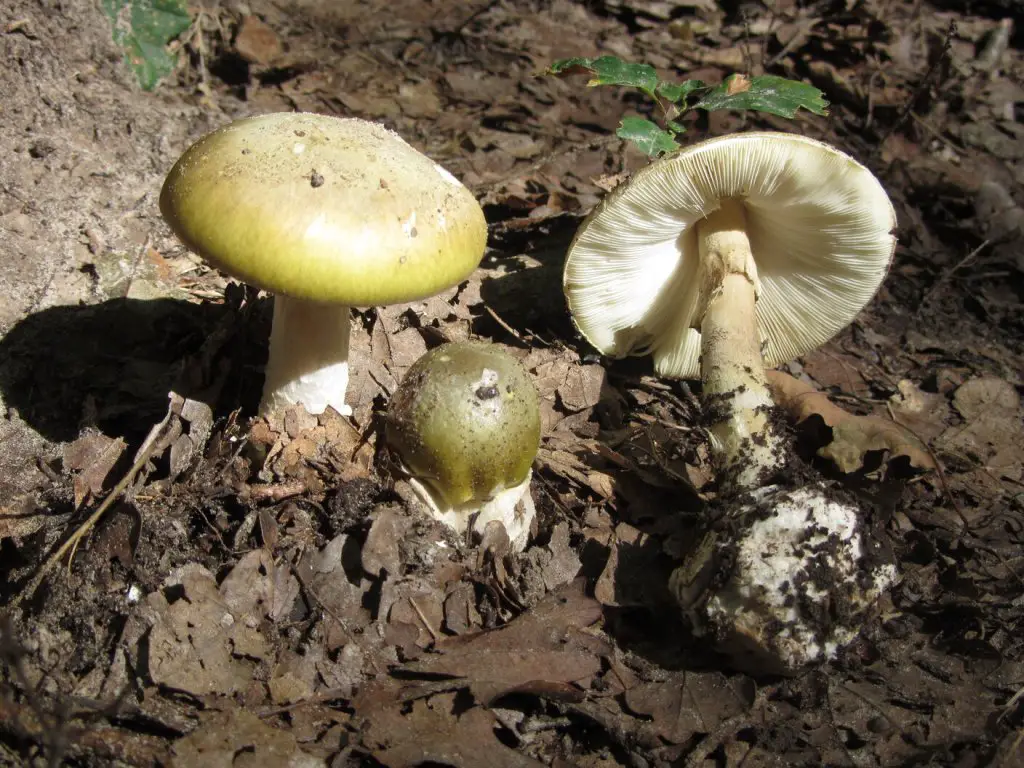
Where Does The Common Puffball Grow?
This species is common in many different environments, including metropolitan and rural. They often grow on roadsides, under hardwoods or conifers, and in grassy areas.
Remember, unlike some look-alikes, they always grow from the ground, not from a tree or wood. They grow especially well in leaf litter.
You will likely find this species in Britain, Ireland, Europe, Asia, Africa, North, Central, and South America.
In fact, it is the most common puffball species in North America. Typically, they flourish in late spring through fall, but in warmer climates, they will also be abundant in the winter.
Common Puffball Foraging Tips
- First and foremost, it‘s important to know exactly what this mushroom looks like and also memorize the characteristics of the poisonous look-alikes.
- Even though it grows on roadsides, it is not advisable to forage them from there. The fungi will likely have absorbed some toxins from all the passing cars.
- While still outdoors, you can make life easier on yourself by cutting the stem after picking the mushroom to check for bugs or color changes. If it is not suitable, go ahead and toss it back to the earth. Keep in mind that the young common puffballs are firm and elastic.
- This species does not keep as long as other fungi. It is best to cook them right after foraging.
Originally from Florida, but with a lust for travel, Sami has found herself in many remote areas with little-to-no access to traditional medicines. Since 2014, she has been experimenting with natural remedies, eastern medicine, and foraging. She believes that the Earth provides us with everything we need to live, heal, and cure.

